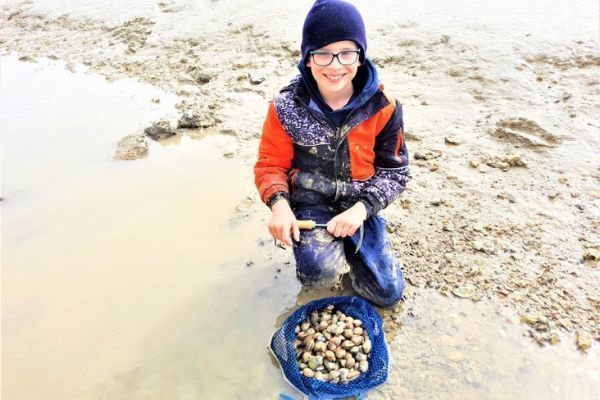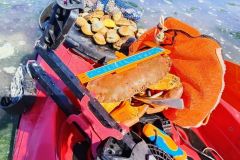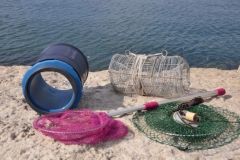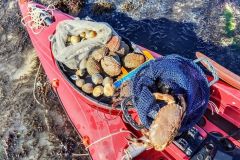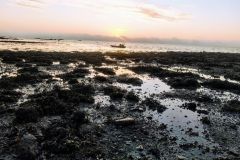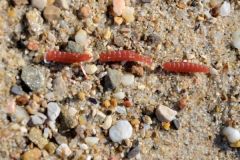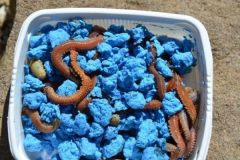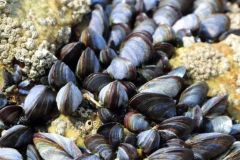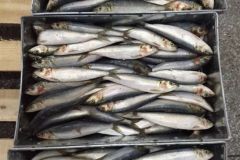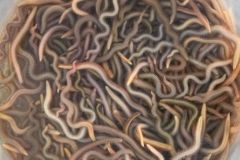Hole fishing, open your eyes to spot the clams
The big ones are the clams of 4 cm and more. To spot them, fishermen rely on the two holes that the clam forms to feed. Once detected, some do not use any tools to dislodge it, just the fingers. Cett his fishing technique is called "hole fishing".
The best fishing practice to limit the impact on the environment is to fish for holes and not to scrape all over the place with a rake. This technique is the most effective, but it is also the most gentle technique that avoids raking the mudflat.
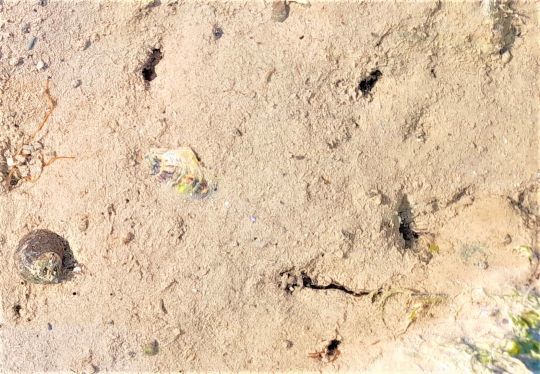
At ebb tide, the sea uncovers the oyster beds and mud flats, but be aware that it is forbidden to fish for shellfish and fish in or near all marine concessions.
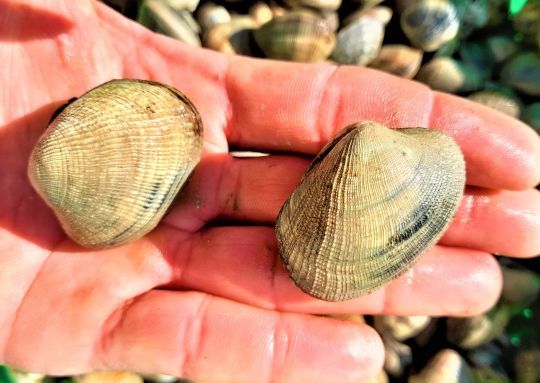
Recognize the two species of clams
We can meet two species of clams, the autochthonous European clam ( Ruditapes decussatus ) and the Manila clam ( Ruditapes philippinarum ), which has been introduced.
To differentiate them, nothing could be easier. The European clam is thinner, more angular and does not have a lunula, while the Manila clam is plumper, with a well-marked lunula and often small patterns on the shell. The siphons of the European clam are separated, hence the two clear holes, the Manila clam has only one siphon which separates towards its middle, forming two closer holes or one hole.
Regulations to preserve the resource base and future fisheries
In addition to the legal size of 4 cm, there is also the quantity. In addition to the 200 units per day per fisherman, the most important quota not to exceed is that of personal consumption.
But before you eat your clams, remember that they have spent their entire lives in the mud. Here's a little tip that may help you avoid spoiling your catch. After washing them in sea water, let them drain for several hours in salt water.
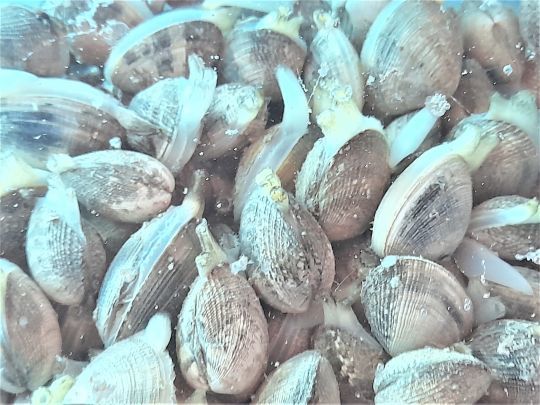
Knowing how to move around to avoid sinking
To move between the mudflats, use the channels, for your safety. The channels are the ones that cross the silted areas. As the mud is more compact, it is easier to move there.
Mudflats are the richest and most productive environments on the planet, they produce more, on the same area as the Amazon forest. It is thus necessary to preserve these so rich environments.
Mudflats, sources of food
The fisherman is not the only one to feed on the mud. There are, of course, the shorebirds that peck at worms and shells. In winter, it is the brant that take over. These migratory geese arrive by the thousands to feed on the Atlantic coasts mainly on eelgrass, small fine plants growing on the mud. This is a protected species for which the Marennes Oléron site is one of the most important in Europe. To preserve good wintering conditions, it is important not to destroy these meadows, by ploughing and trampling.
Regulations and health alerts vary from one site to another, so be sure to check with the marine services before going fishing.
